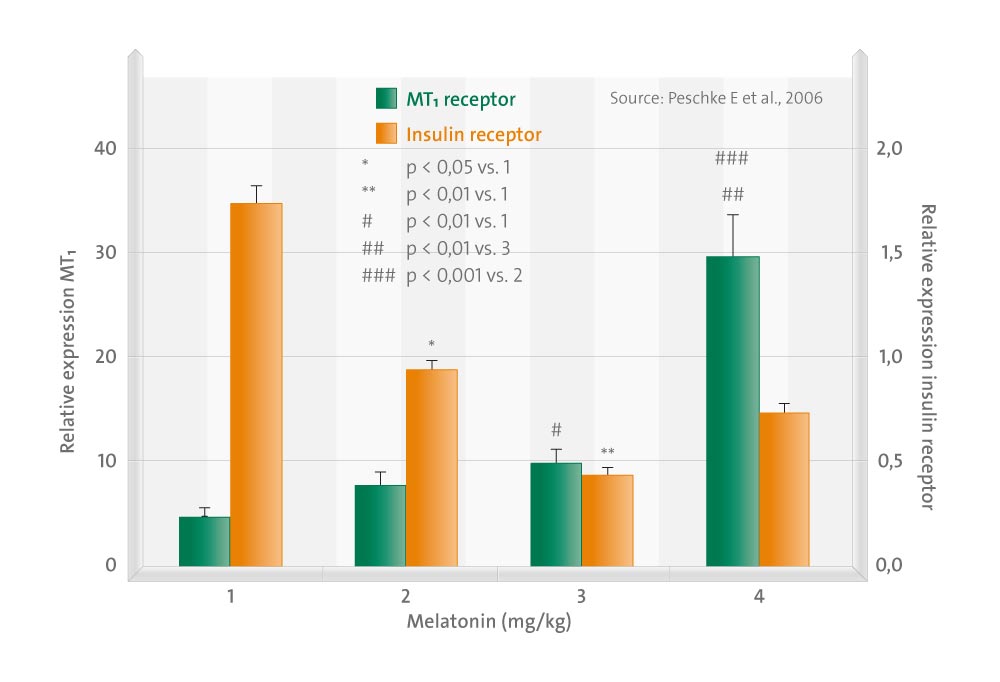There are functional inter-relationships between the beta cells of the endocrine pancreas and the pineal gland, where the synchronizing circadian molecule melatonin originates. The aim of this study was to elucidate a putative interaction between insulin and melatonin in diabetic patients and a diabetic rat model.
We analyzed glucose, insulin, and melatonin levels of type 2 patients, as well as type 2 diabetic Goto Kakizaki (GK) rats by radioimmunoassay. Expression of pancreatic melatonin and pineal insulin receptors, as well as arylalkylamine-N-acetyltransferase (AANAT), was determined by real-time reverse transcriptase polymerase chain reaction (RT-PCR). The AANAT enzyme activity was measured in pineal homogenates.
Diabetic patients showed a decrease in melatonin levels, while in the pancreas of GK rats an upregulation of the melatonin-receptor mRNA was determined. The pancreatic islets of GK rats showed expression of the mRNA for the pancreatic melatonin (MT1) receptor, which had previously been identified in rats and insulinoma (INS1) cells.
Besides their presence in animal cells, the MT1-receptor transcript was also detected in human pancreas by RT-PCR. Whereas the rat pancreatic mRNA expression of the MT1-receptor was significantly increased, the activity of the pineal AANAT enzyme was reduced. The latter observation was in accordance with plasma melatonin levels.
The insulin-receptor mRNA of the pineal gland was found to be reduced in GK rats. Our observations suggest a functional inter-relationship between melatonin and insulin, and may indicate a reduction of melatonin in the genesis of diabetes.
